UT Austin Marks 50 Years Since Mass Shooting as Campus Gun-Carry Law Begins
The 1966 massacre of 17 people is considered the first U.S. mass shooting.
— -- A solemn ceremony today at the University of Texas at Austin marked the 50th anniversary of what in 1966 was an unprecedented shooting massacre. Today also happens to be the start of a new campus gun-carry law in Texas.
On Aug. 1, 1966, student and Marine-trained sniper Charles Whitman took rifles, pistols and a sawed-off shotgun to the observation deck of the university's landmark clock tower and opened fire at unsuspecting students on the campus grounds below. The massacre is considered the first U.S. mass shooting.
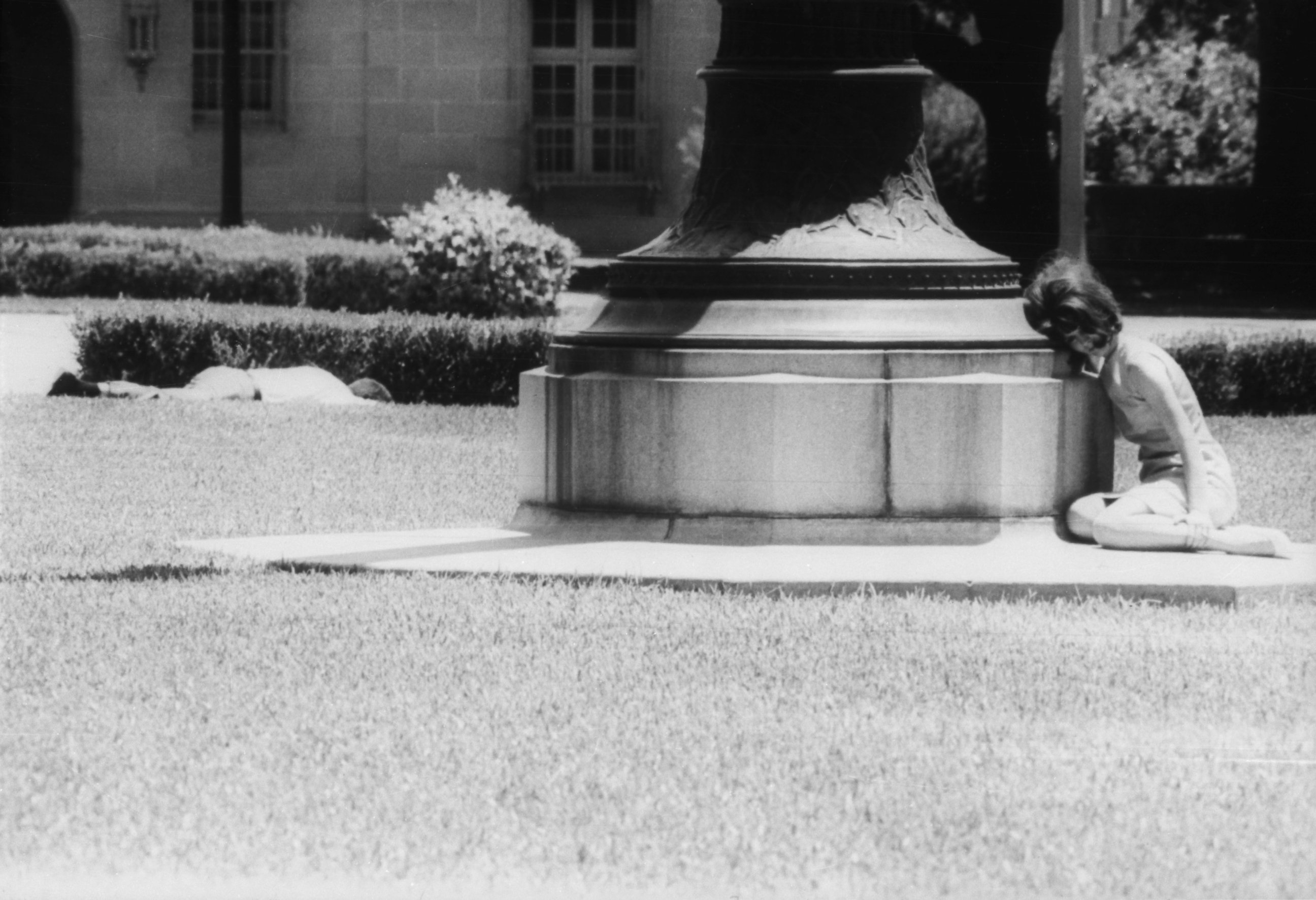
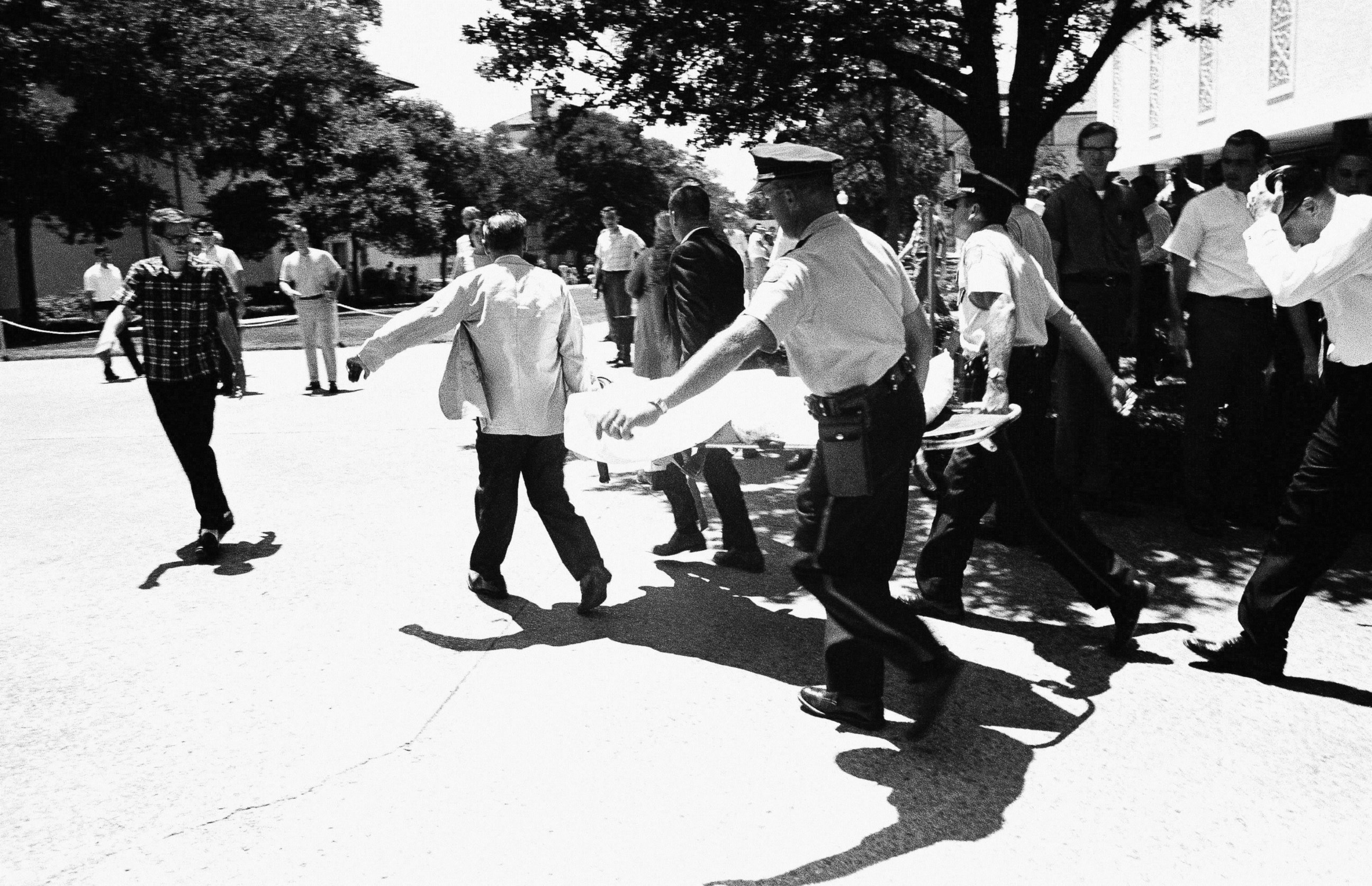
Seventeen people died, including Whitman's wife and his mother, both of whom he had killed before climbing to the top of the tower. More than 30 others were wounded.
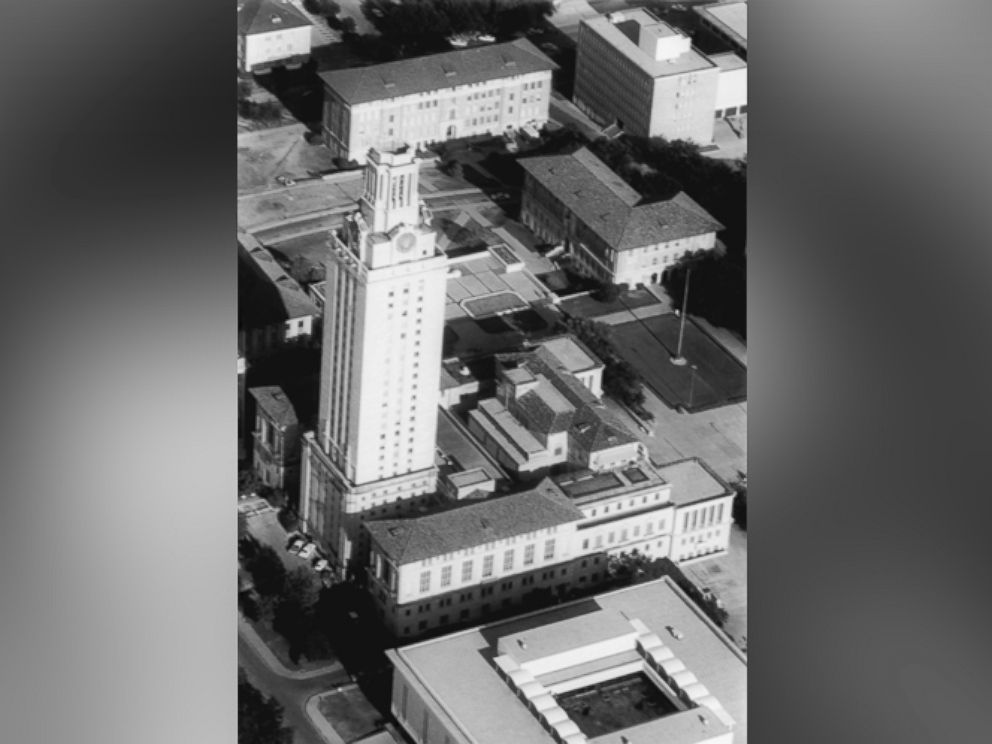
Bells tolled as the ceremony began on a sunny day on campus. The tower clock was stopped at 11:48 a.m. local time, the time the massacre began. The clock's hands will not move for 24 hours.
Flags were lowered on the campus's main mall, and a bagpiper led a procession from there to the Tower Garden, just north of the tower.
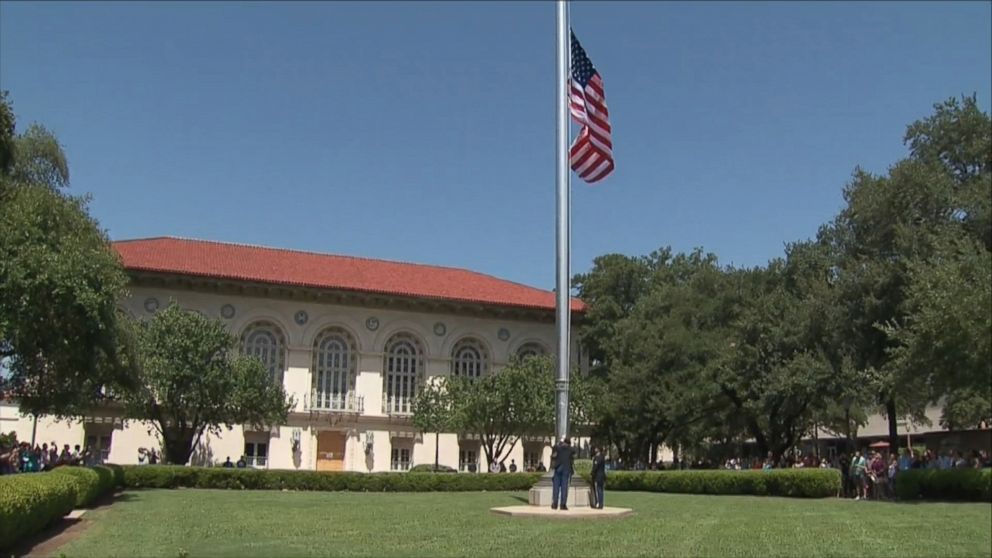
The university then held a ceremony to rededicate the garden, originally dedicated in 1999, and to unveil a new memorial to the injured and dead.
UT Austin President Gregory Fenves spoke at the ceremony of the heroes from that day of unimaginable violence, including the students and staffers who risked their lives to move shooting victims to safety, the medical professionals who raced victims to the hospital, the citizens who donated blood and the officers who rushed toward the danger to protect others. He recognized the seven officers who ascended the tower to end the rampage. Three of those officers have since died; the remaining four attended the event today.
Fenves called the new memorial and today's remembrance "long overdue."
"Fifty years ago, society responded to violent tragedy differently. Healing was thought to occur when we moved on. Survivors did not receive the support that they needed," he said.
James Bryce, a student at the time of the shooting, said too little was done afterward to commemorate the victims. After the "mayhem ended," the school cleaned the sidewalks and replaced the windows and tried to "get back to normal," he said.
"This massacre, we need to remember, occurred before terms like 'gun violence' and 'mass shooting,'" he said. "This campus attack was unprecedented. I think it was as unexpected ... as if some flying saucer had landed there on top of the tower."
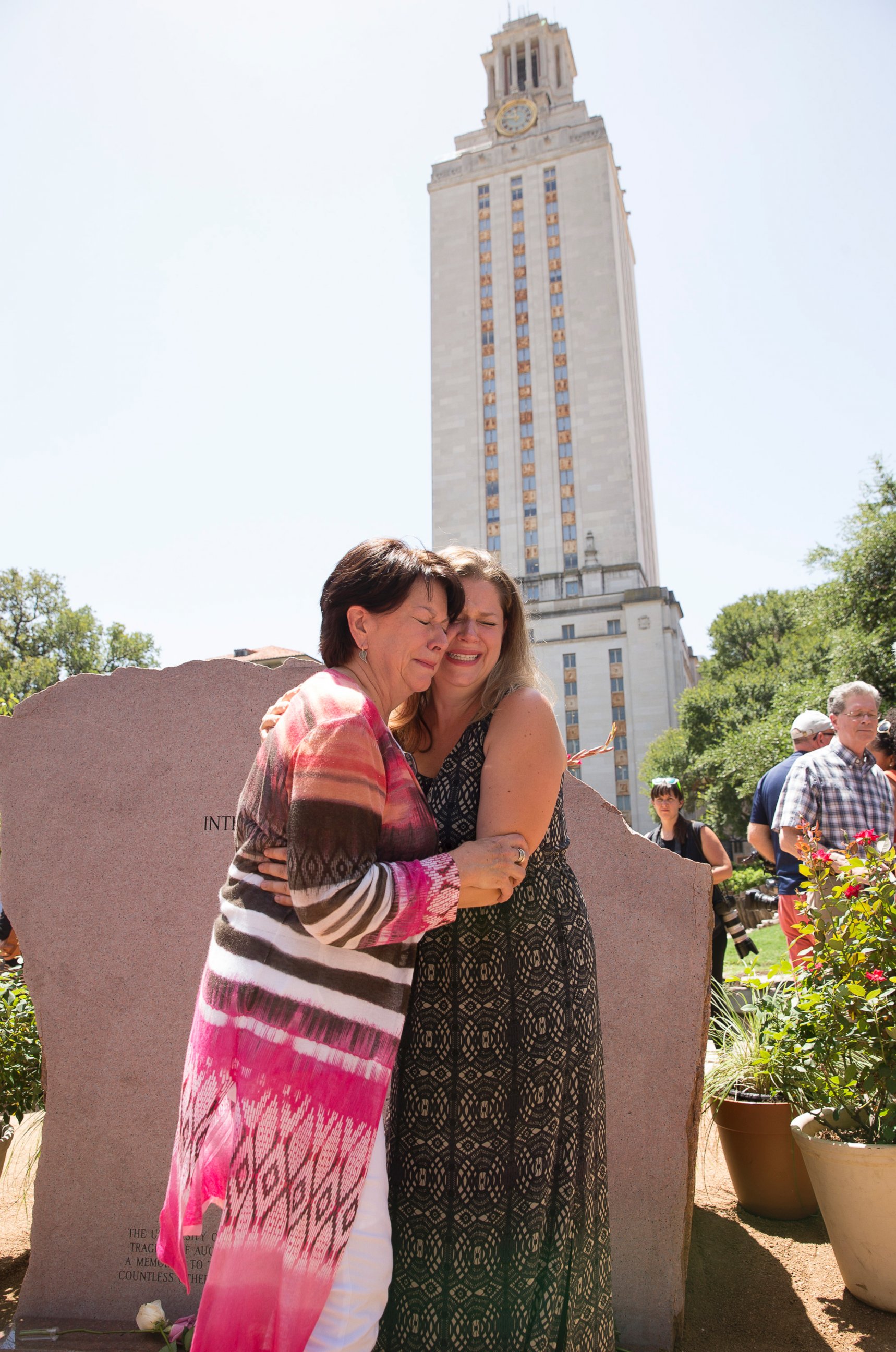
Shooting survivor Claire Wilson James, who also spoke at the ceremony, was pregnant at the time of the massacre and lost her unborn baby after being shot in the stomach. The next bullet hit and killed her boyfriend.
She said the terror "could've gone on for days. It could've gone on for much longer than it did because no one knew what was happening. It was terrifying." She said the memorial serves "as a reminder of the power that we have each moment to become a community of love."
Today, 50 years after the shooting, is also the beginning of Texas' campus carry law. The law allows concealed handgun license holders to carry weapons into public university buildings, classrooms and dorms — including at UT Austin, where a significant number of faculty members and students opposed the new law, said Gregory Vincent, the vice president for diversity and community engagement at the Austin campus.
The law allows campus carry regulations to differ at each college or university. At UT Austin, for example, teachers may make their offices gun-free areas. And although guns are allowed in the campus's dorm lounges and dorm dining areas, they are mostly restricted from being taken into sleeping areas.
"It is a most unfortunate coincidence that we have this new law going into effect the same day we are memorializing the 50th anniversary of the tower shootings," Vincent told ABC News.
"We do understand that there are strong emotions around both of these issues," he said, adding that the school does not "want to minimize the legitimate feelings people have around this law."
While much of the faculty, staff and administration strongly opposed the law, "the administration has great confidence in our university police as well as the community to do this in the appropriate way," Vincent said.
"We just have to have faith that the people who will carry ... will do so in a responsible way," he said, adding that the university remains committed to making the campus as safe as possible.
Fenves told reporters that the university has "worked very hard to develop policies consistent with the law." He said he recognizes that this is an "emotional time" but said that students and faculty members "should notice very little" change on campus.
Any open carry of handguns remains prohibited on campus. "If you see a gun, call the police. And that will not change," Fenves said.
Texas has more than 1 million concealed handgun license holders, according to The Associated Press.
The Associated Press contributed to this report.



